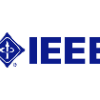Nowadays, Vehicle-To-Everything (V2X) networks are actively developing. Most of the already deployed V2X networks are based on the IEEE 802.11p standard. However, these networks can provide only basic V2X applications and will unlikely fulfill stringent requirements of modern V2X applications. Thus, the IEEE has launched a new IEEE 802.11bd standard. A significant novelty of this standard is channel bonding. IEEE 802.11bd describes two channel bonding techniques, which differ from the legacy one used in modern Wi-Fi networks. Our study performs a comparative analysis of the various channel bonding techniques and a single-channel access method from IEEE 802.11p via simulation. We compare them under different contention window sizes and demonstrate that the legacy technique provides the best quality of service in terms of frame transmission delays and packet loss ratio. Moreover, we have found a quasi-optimal contention window size for the legacy technique.
翻译:现已部署的V2X网络大多以IEE 802.11p 标准为基础。然而,这些网络只能提供基本的V2X应用程序,不可能满足现代V2X应用程序的严格要求。因此,IEEE推出了一个新的IEE 802.11bd 标准。这一标准的一个重要新颖之处是连接通道。IEE 802.11bd 描述了两种频道连接技术,这些技术不同于现代无线网络的遗留技术。我们的研究通过模拟对各种频道连接技术以及IEEE 802.11p 的单一通道接入方法进行了比较分析。我们在不同的争议窗口尺寸下比较这些技术,并表明遗留技术在框架传输延迟和包损失比率方面提供了最佳的服务质量。此外,我们发现遗留技术存在一种准最佳的争议窗口大小。




